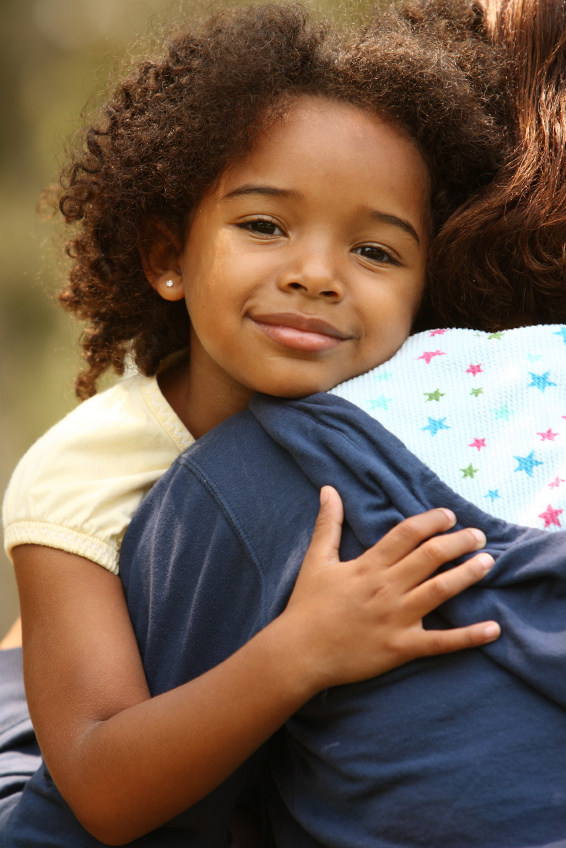
Helping Children with Compulsive Behavior
read •

Are you able to offer any advice to parents who are dealing with children who display compulsive behaviour? In my case, my child (7) HAS to eat 6 nuts before bed, try to have a BM before we leave the house, even to go in the yard, touch her toothbrush 4 times before putting it away, etc. She is unschooled, we cosleep, she has never been left with a babysitter, attachment parented, etc. Thank you kindly.
I can see why you're concerned. You've done everything you can to raise an emotionally healthy child, and yet your daughter is exhibiting a high degree of inflexibility. This kind of behavior usually indicates an extremely sensitive child who doesn't feel safe. She is trying hard to manage her anxiety and big feelings, using rigid "rules" to reassure herself.
Many experts hypothesize that such reactions (when not warranted by the environment) can be traced to issues in the brain, perhaps from low serotonin levels or over-active basal ganglia. While no professional would diagnose your child from your brief letter, many would recognize the symptoms you describe as possible early signs of Obsessive Compulsive Disorder.
But I want to emphasize that this doesn't mean your daughter will go on to develop OCD. It may be that with your support, she can learn to manage her anxiety. Lets talk about what you can do, and when to seek professional help.
First, how can we understand what's happening? Your daughter is showing you that she is having a hard time with anxiety, and she's trying to manage that anxiety with various rigid compulsions.
Anxiety is part of life; we all get anxious many times a day. We all find ways to manage our anxiety, such as telling our self that things are ok, or breathing
more deeply, or eating foods we find soothing. As we become more skilled handling ourselves in various situations, we gain confidence in life and our
anxiety is lessened. However, we may still avoid new or anxiety-producing situations, such as flying, going to the dentist or making speeches.
Children are naturally more anxious. Not only are they less experienced with whether things are dangerous, and more vulnerable due to size, they're
confronted with new situations daily. In addition, children have big feelings and big fears; they need the safety of an adult who will "witness" while
they express those feelings. If for any reason a child doesn't have such a safe haven, she may "stuff" those fears, and find herself increasingly anxious.
Some kids find their anxiety intolerable and they develop a physical reaction to manage their anxiety, such as compulsive hand-washing or spitting. Others develop elaborate rules to make themselves feel safe, such as eating 6 nuts before bed or touching their toothbrush four times before putting it away -- like your daughter.
Unfortunately, these behaviors don't get at the root of the problem, which is the anxiety, and since anxiety tends to feed on itself and make the person more anxious, the number of rules the child needs to feel safe tends to increase over time.
So what can you do to help your daughter?I would recommend supporting your daughter in a number of ways, all at the same time.
1. Help her release any fears she has stored up.
Start by playing games that let her giggle, because laughter releases the same tensions as crying.Invent games that relate to things she's afraid of, but let her be the powerful one, reassuring you while you're afraid. For instance, you might beg her not to do something "dangerous" that you know she will do, such as jump from a (safe) high place, over and over, saying all the things you're worried about how she could get hurt and letting her demonstrate her bravery and mastery, giggling at your fear. Once you get her giggling, you'll know you're on the right track. Just notice what gets her giggling, and do more of it (except tickling, which robs her of control, and so creates more anxiety.)
Then move on to tears. Choose a time when you have the emotional and physical availability to spend a couple of hours helping your daughter through her fear. Choose one of her compulsions and set a limit so that she can't do it. ("I know you want six nuts before bed, Sweetie, but we are out of nuts.") Her anxiety will escalate and explode. Be prepared to breathe your way through this as her fears surface. What fears? It doesn't matter, they could be things you don't even know about, from birth trauma to nightmares to loud noises to a fear that you will disappear.
When kids release big fears, they rage, kick, scream, cry, sweat, tremble, and cry without tears. Stay connected to her so she feels safe.Stay fully present, you are her witness. Your love may seem to intensify her upset, which is good -- she is getting out feelings that have controlling her. Your daughter needs to know that you are not frightened of her terrifying feelings, that you can handle it. Hold her as close as she will let you, and resist the urge to shut down her feelings by soothing her. Instead, say "I am right here. Nothing can hurt you. I will keep you safe." Keep eye contact whenever she wants to open her eyes and look at you. If she yells at you go leave her alone, it's because these feelings are so upsetting and she knows your loving presence is helping them surface. Say "I will step back a little, but I am staying right here. I won't leave you alone with these scary feelings. I will keep you safe. Nothing can hurt you."
After your daughter gets through her fear, she may weep, or fall asleep, or snuggle up to you. You should see a subsequent lessening of her compulsive behavior. You may need to do this regularly for a month or so, but as she gets her fears out, her compulsions may vanish entirely.
2. Help your daughter learn to manage her mind. Teach her to notice anxious thoughts, voice them, and get your help to reframe them. Try relaxing bedtime tapes (such as the Indigo Dreams bedtime cd) and guided imagery.Dr. Daniel Amen, in his book Change Your Brain, Change Your Life, says that thirty minutes of relaxation a day can retain your basal ganglia to relax.
3. Increase her sense of well-being. Since your daughter is trying to overcome a physical message in her brain that tells her she isn't safe, you may be able to ease that message with natural methods of increasing her serotonin levels such as deep breathing, yoga and exercise.You might also want to consult a nutritionist or your pediatrician about the possibility of supplements such as tryptophan.
4. Hypnosis has been proven effective in helping people learn to feel safe. Self-hypnosis is a very valuable skill that can be taught to kids. You can probably teach yourself, and there are many psychologists who offer hypnotism treatment.
5. Teach your daughter other ways to manage anxiety when it does come up. EFT (Emotional Freedom Technique), for instance, uses tapping on acupressure points to release anxiety and soothe the nervous system; it's safe, simple, and something every child should know.
If you do all of these things for three months, and your daughter is still in the grip of her compulsions, I urge you to seek professional intervention.
The good news is that most kids who receive cognitive behavioral therapy for OCD in childhood outgrow their symptoms, or at least learn to manage them,
by the teen years.
Cognitive behavioral therapy (CBT) is the most effective treatment for OCD behaviors. The child is slowly exposed to objects that cause anxiety and
is helped to tolerate the anxiety without resorting to the compulsive behavior or touching her toothbrush or whatever. Learning to manage their anxiety
gives them an essential tool they can use in daily life.
There are also medications that are sometimes prescribed for kids with severe OCD symptoms who don't respond to cognitive behavioral therapy, but
from your description your daughter's symptoms are mild and most likely would not require medication.
Your early attention to this issue is terrific and will hopefully help your daughter to put it behind her quickly. Blessings to you and your daughter.
Click here to watch Dr. Laura's video "Helping Children With Childhood Fears."




